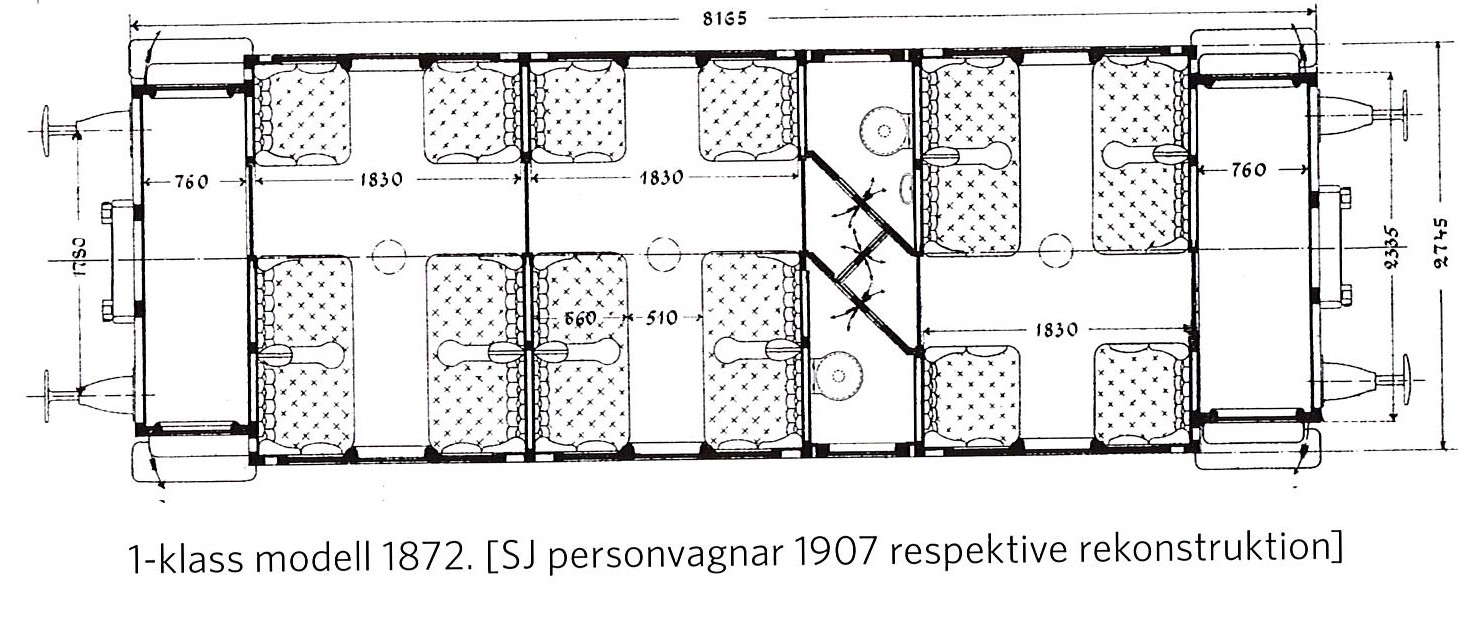
1873 - Night Trains and Toilets
Night Trains and Toilets
The main reason for introducing night trains was to create faster and more efficient mail connections.
Sweden had gained its first international railway link with the Laxå–Kristiania (Oslo) line. From Norway, a request was made to the Swedish State Railways (SJT) to establish both mail and passenger connections between Kristiania and Malmö. In response, the board decided to launch night trains connecting Kristiania, Gothenburg, Stockholm, and Malmö. They also aimed to provide a smooth transfer to the mail trains heading to Denmark.
The first night trains began running in 1873, although they were nothing like the sleeper carriages we know today. For this new service, SJ acquired special carriages known as the “Fränkel coaches.” These were ordered from the company Eisenbahnbedarf in Berlin—twelve in total. The coaches were fitted with reclining armchairs offering 18 first-class seats, or alternatively nine sleeping places in first class, and featured two “closet rooms,” which was a novelty at the time.
No more of that model were ordered, and already in 1874, a second generation of coaches known as the “Berlin coaches” was introduced. Since then, night trains have taken many forms in Sweden.